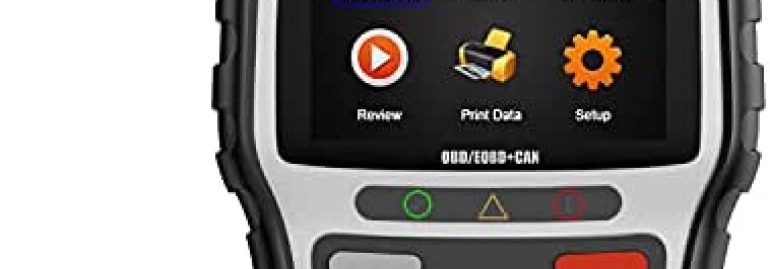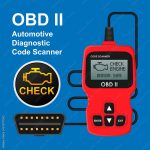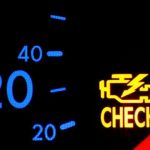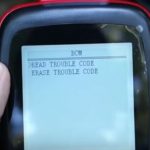If you’re not familiar with the various categories of car tester codes, here’s a quick primer: B-codes cover functions inside the passenger compartment, while C-codes are for outside-the-passenger-compartment functions. P-codes cover engine, transmission, and associated drivetrain accessories. And U-codes cover shared computer systems and network & vehicle integration (NVI) functions. The first digit of the trouble code indicates whether it is manufacturer-specific or generic.
EVAP system
EVAP systems have been around for some time. Dealers have their own equipment that is specialized to test them, but these are expensive to purchase, and you are unlikely to find one in an aftermarket repair shop. Instead, OE dealers rely on the OE scan tool for EVAP diagnostics. If you notice that your EVAP car tester codes are high, this is an indication that you need to take action.
The EVAP system produces an emission code that indicates a malfunction in the engine. These error codes can range from 0440 to 0457. They can also refer to any of the following. Several possible causes of this code range from a rusted fuel filler pipe to a leak in the gas cap. If the codes do not mean a malfunction, your next step is to replace the faulty part.
In addition to a malfunctioning EVAP system, your car’s EVAP system may also have a faulty hose. This can cause the car to produce a high amount of harmful emissions. Fortunately, modern vehicles have a way to minimize the emissions from their engines. A special hose directs vapors into a charcoal canister. Once the canister is full, a purge control valve opens to let the vapors out. The vapors then enter the engine to burn off and decrease overall emissions. While EVAP systems are highly effective, they can be prone to leaks. If your vehicle’s EVAP system is leaking, the OBD will alert you to the issue.
When your EVAP system car tester is reporting fault codes, you’ll want to be sure that it’s set to the correct code. The most common reasons for EVAP system car tester codes are blocked lines, leaks, faulty sensors, and malfunctioning solenoids. The problem with a faulty gas cap can be the source of the P0442 fault code. You can replace it yourself, but this may not solve your problem.
Often, EVAP system trouble codes are related to fuel leaks. The P0455 code, for example, indicates a large leak in the EVAP system. An EVAP system is a vital part of your car that keeps fuel vapors from escaping into the atmosphere. Charcoal canisters are responsible for absorbing the fuel vapors that leak out of the system. The engine control module controls the vent and purge control valves to prevent a fuel leak.
Camshaft position sensor
Whether you’ve had the engine run for a few months, or you just noticed the check engine light is on, you can easily diagnose the problem with a camshaft position sensor car tester code. The P0340 code, which refers to a problem with the camshaft position sensor, means that the sensor’s electric circuit is not functioning correctly. In early stages, the malfunction does not cause any symptoms, but it does mean that the camshaft sensor is not sending the right signal to the computer. Luckily, the P0340 code is generic and applies to most vehicles built after 1996.
If the code still appears, you should investigate further. You may be dealing with a faulty camshaft position sensor or an issue with the internal components of the engine timing. The best way to do this is to get a multimeter with the appropriate voltage settings. In order to find the exact voltage you should set the multimeter to DC Volts. You can find the wires by consulting your vehicle’s manual, or you can simply turn the ignition key on.
In case the code does not go away, you need to check the wires that connect the CMP sensor. This can happen when the wires are broken or if the sensor is not properly synchronized with the crankshaft. Another cause for a CMP code is a bad oil cap. It is therefore advisable to replace the oil cap if it is loose or defective. Otherwise, you may end up with a worse problem.
A failed camshaft position sensor can cause a vehicle to have poor fuel economy. The engine may not be able to start or even run properly. In addition, a faulty sensor will also increase the amount of fuel your vehicle consumes. This is not only dangerous, but also reduces your gas mileage. The better the sensor is, the better your vehicle will run. Your next step is to visit your mechanic immediately.
Ignition system
Ignition system car tester codes can be displayed by an instrument called a voltmeter. The voltmeter measures the current flowing in a circuit. When the voltage level is zero, the ignition system is working properly. If the voltage level is higher than twelve volts, it means the ignition system isn’t. Otherwise, a bad computer or wiring is to blame. Alternatively, the crankshaft angle sensor or computer control relay may be malfunctioning.
The P2335 code is one example. This generic code indicates an ignition system problem. If the engine misfires, the faulty ignition coil may be the culprit. The P2335 code indicates that the secondary circuit of the ignition coil L is faulty. Each cylinder has its own ignition coil. Coils in OBD-II-equipped cars are secured to the spark plug with a small wire or plug boot.
Next, inspect the spark plugs and spark plug wires. The engine distributor cap and rotor button should be inspected. If the spark doesn’t appear, you need to perform a more extensive diagnosis. However, if the spark is present, other areas must be checked. You should also install a fuel pressure gauge in the fuel rail. Make sure that the “Key On” fuel pressure is within the manufacturer’s specifications.
If the code doesn’t seem to help you identify the problem, you can try measuring the internal resistance with an ohm meter. If it’s outside of specification, you should replace the coil. Don’t disconnect the coils while the engine is running. The other possible problem is that the ignition module is receiving the trigger signal from the crankshaft position sensor and PCM. These malfunctions will affect the engine’s ignition.
If you have any doubts, you should consult a professional. Many people think they can diagnose ignition problems themselves with a simple voltmeter. The truth is, this method is very difficult and often ineffective. Professional shops have advanced diagnostic equipment and will be able to diagnose the problem in less time. However, if you are unsure of how to use a voltmeter, try to follow the steps described above.
Fuel or air metering injection system
If you have a car with a problem with fuel or air metering, it is highly likely that you have some kind of code on your Car Tester. The code may indicate a variety of problems related to the fuel and air metering system. If you’re unsure of which one to read, use the following guide to diagnose the problem:
A test light is another useful tool to diagnose your car’s fuel or air metering injection system. Attach it to the injector harness and crank the engine to see if the light flashes. This indicates that the fuel injectors are receiving a signal from the ECM. However, this test may not be 100% effective in some vehicles because they have a resistor in place that limits the current.
If you’re not sure which code is causing your problem, look for an error code that indicates a problem with the fuel or air metering injection system. A P0171 code is an indicator that the air-fuel ratio is too lean. This problem occurs when the oxygen sensor in the engine detects too little air and can’t adjust the mixture properly. To determine if your system is working properly, scope the injectors. Dirty gas can plug the injectors and result in a lean code.
In addition to fuel and air metering codes, there are a variety of other codes that can cause your vehicle to malfunction. If the P0128 code is causing the car to overheat, it means that the fuel or air metering system is malfunctioning. In this case, your best bet would be to swap the injectors for new ones. A new one could solve your car’s P0204 problem.






